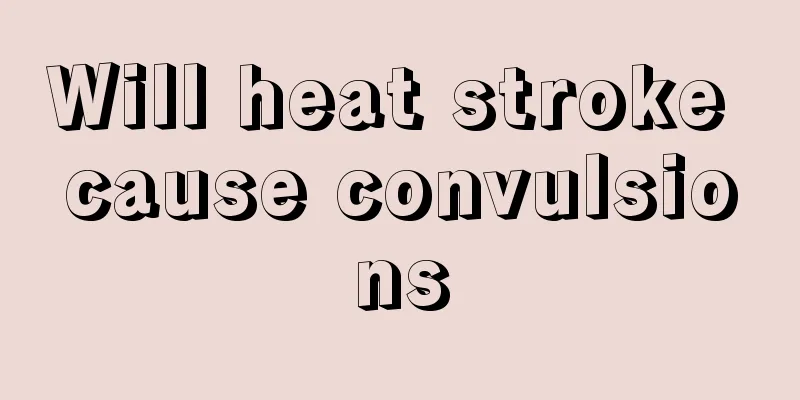Will heat stroke cause convulsions

|
Heatstroke is more common in summer, so certain treatments must be taken at this time, such as going to a ventilated and cool place. If the heatstroke is severe, convulsions may occur, which is also called heatstroke cramps. It often has a greater impact on patients. Prevention should be strengthened in daily life. When heatstroke occurs, timely treatment should be sought. You can drink plenty of water and cool down in time. Pathology and etiology In high temperature (>38°C) environments, heat cramps may occur after physical activity when excessive fluid loss occurs through sweating and only water is replaced. This result is due to relative losses of sodium and occasionally potassium and magnesium. Heat cramps are common among people who do manual labor (such as engine room workers, steelworkers, and miners), climbers or skiers who wear excessive cold weather clothing, tennis players and other weekend athletes, and people who are not acclimatized to hot and dry climates, where rapid evaporation makes excessive sweating almost unnoticeable. Symptoms and Signs The onset is often sudden, with the muscles of the limbs being affected first, and severe pain and wrist and foot cramps making the hands and feet unable to move. Often, the spasms are episodic, with the muscles feeling hard and knotty. If the cramps affect only the abdominal muscles, the pain may resemble an acute abdomen. Vital signs are usually normal. The skin can be hot and dry or cool and clammy, depending mainly on the humidity. Prevention and treatment Know that heat cramps are often preventable. In most cases, heat cramps can be prevented and quickly relieved by drinking liquids or eating foods containing sodium chloride. Sodium chloride tablets are often used for prevention, but they may cause gastric irritation and excessive doses may lead to edema, so taking such tablets is not encouraged. If the patient cannot eat or drink, 0.9% sodium chloride solution should be given intravenously. Three things to note when preventing heat stroke during outdoor activities: (1.) Drink water. After sweating a lot, you should replenish water in time. When going out, especially hiking, climbing or going to places where water is scarce, be sure to bring enough water. If conditions permit, you can also bring some fruits and other thirst-quenching foods. (2.) Cool down. Before going out, you should be prepared for sun protection. It is best to prepare a parasol, a sun hat, and wear light and breathable clothing. If you have any signs of heat stroke while outdoors, take immediate action, such as finding a cool, ventilated place, loosening your collar, and lowering your body temperature. (3.) Prepare medicine. Carry some medicines for preventing and treating heat stroke with you to relieve the symptoms caused by mild heat stroke. |
<<: What to do if you have low blood sugar during military training
>>: Does pelvic repair really work?
Recommend
How are attached ears formed?
An attached ear is actually a congenital malforma...
I got pregnant and had a medical abortion
Although pregnancy is a pleasant surprise for man...
Can early uterine cancer be cured?
Endometrial cancer is a group of epithelial malig...
The main functions of plasma proteins
The main functions of plasma proteins are to main...
How to wash crabs cleanly
Everyone will definitely clean the crabs before e...
I have stomach problems and bad breath
Nowadays, many young people suffer from stomach p...
Can I drink tea while taking oral anti-inflammatory medicine
As we all know, it is not recommended to drink te...
The efficacy and function of wormwood
Many people like to soak their feet in winter, be...
Pain in the ribs below the chest_Pain in the ribs below the chest
When the ribs under the chest hurt, we should pay...
Repeated pneumonia attacks can turn into lung cancer
In daily clinical work, we often see that many lu...
How much salt should be put in one pound of chili sauce
Many people like to eat some chili peppers when e...
Can you drink honey water when you have a cold and cough? The truth is this
Colds and coughs are common in daily life, and dr...
Does stretching your ligaments make your legs longer?
Growing taller is the wish of most people, but it...
Patients with cardia cancer often experience severe pain when swallowing
Patients with cardia cancer often experience seve...
What are the treatments for lung cancer? Lung cancer can be treated with these methods
Everyone knows that smoking is very bad for the b...









